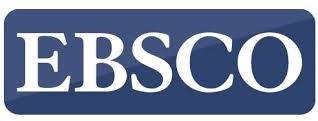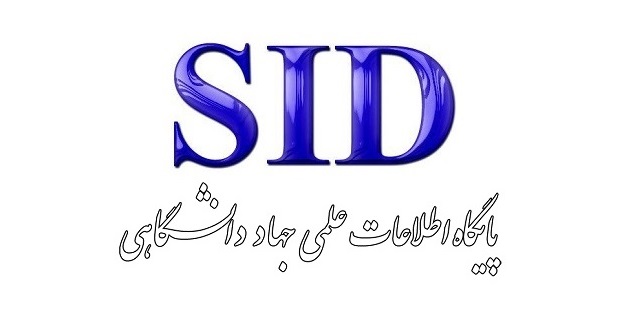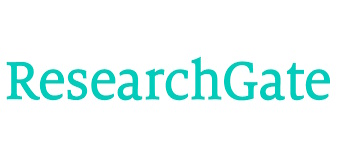مدلسازی عوامل مؤثر بر آوای سازمانی در دانشگاه علوم پزشکی زنجان با استفاده از روش ISM و تحلیل MICMAC
کلمات کلیدی:
آوای سازمانی، تفسیری (ISM)، تحلیل MICMAC، مدلسازی معادلات ساختاری (SEM)، دانشگاه علوم پزشکی زنجانچکیده
هدف این پژوهش، شناسایی و تبیین عوامل مؤثر بر آوای سازمانی در دانشگاه علوم پزشکی زنجان با بهرهگیری از رویکرد ترکیبی (کیفی-کمی) بود. در فاز کیفی، مدیران و خبرگان دانشگاهی از طریق نمونهگیری گلولهبرفی انتخاب و مصاحبه شدند. در فاز کمی، کارکنان دانشگاه با روش نمونهگیری تصادفی ساده بررسی شدند. از طریق مرور ادبیات و تحلیل محتوای مصاحبهها، 14 عامل کلیدی شناسایی شد که شامل عوامل فردی (مانند دانش و اعتمادبهنفس)، سازمانی (مانند فرهنگ سازمانی و نظام ارزشگذاری) و اجتماعی (مانند حمایت اجتماعی) بودند. این عوامل با روش دلفی فازی غربال و اعتبارسنجی شدند. سپس، با استفاده از مدلسازی ساختاری-تفسیری (ISM)، ساختار سلسلهمراتبی و روابط متقابل بین عوامل ترسیم شد. تحلیل MICMAC نیز برای طبقهبندی عوامل به دستههای مستقل، پیوندی، وابسته و خودمختار به کار رفت. در نهایت، مدل مفهومی پژوهش با مدلسازی معادلات ساختاری (SEM) آزمون شد. یافتهها نشان داد که عوامل استراتژیک، از جمله فرهنگ سازمانی، ساختار سازمانی، نظام ارزشگذاری و ایمنی شغلی، نقش محوری در تقویت آوای سازمانی ایفا میکنند. شاخصهای برازش مدل و معناداری روابط بین عوامل تأیید شد. این پژوهش چارچوبی علمی و عملی برای طراحی مداخلات مدیریتی بهمنظور ارتقای مشارکت کارکنان، افزایش شفافیت و بهبود عملکرد سازمانی در دانشگاه علوم پزشکی زنجان ارائه میدهد.
دانلودها
مراجع
Atay, E., & Bayraktaroglu, S. (2020). Work-life conflict and organizational voice in higher education. Journal of Higher Education Policy and Management, 42(3), 347-362. https://www.ejbe.org/index.php/EJBE/article/view/284
Azizian, M., & Kohan, N. (2018). The Impact of Justice on Organizational Commitment with the Mediating Role of Organizational Voice: A Case Study of the General Directorate of Youth and Sports Affairs of Ardabil Province. Management Studies Journal, 7(3), 65-80. https://arsmb.journals.pnu.ac.ir/article_5531.html
Bashir, M. F., & et al. (2021). A moral repair process: How and when unethical pro-organizational behavior increases voice. Journal of Business Ethics, 173(2), 325-343.
Chand, P., Thakkar, J. J., & Ghosh, K. K. (2020). Supply chain sustainability and complexity in Indian mining. Resources Policy, 67, 101667. https://ideas.repec.org/a/eee/jrpoli/v68y2020ics0301420720302178.html
Derakhshan, M. (2017). Predicting Organizational Voice through Ethical Climate and Psychological Capital. Journal of Ethics in Science and Technology, 12(4), 45-60. https://ethicsjournal.ir/browse.php?a_id=610&sid=1&slc_lang=fa
Doostar, M., Ismailzadeh, M., & Hosseini, H. (2016). Investigating the Impact of Ethical Leadership on Silence Behavior and Employees' Voice and Performance. Public Management Perspective, 27, 63-83. https://jpap.sbu.ac.ir/article_95845.html
Eisenberger, R., & Goodall, A. H. (2009). Citizenship behaviors and leadership. Journal of Applied Psychology, 94(5), 1203-1217.
Faisal, M. N., Banwet, D. K., & Shankar, R. (2006). Supply chain risk enablers. Business Process Management Journal, 12(4), 535-552. https://doi.org/10.1108/14637150610678113
Fakhri, Z., Shojai, S., & Kheirandish, M. (2021). Investigating Factors Affecting the Psychological Empowerment of Employees in Educational-Therapeutic Hospitals in Tehran. Scientific Research Journal of Birjand University of Medical Sciences, 28(3), 234-245.
Hems, L. M. (2012). Voice and innovation: Participative management. Journal of Organizational Behavior, 33(6), 782-800.
Heydari Soreshjani, Y., Karami, H., & Pejman, M. (2015). Investigating the Impact of Social Capital on Organizational Voice in Service Organizations. https://jrlat.atu.ac.ir/article_7930.html
Hirschman, A. O. (1970). Exit, voice, and loyalty: Responses to decline in firms, organizations, and states. Harvard University Press. https://pages.ucsd.edu/~bslantchev/courses/ps240/05%20Cooperation%20with%20States%20as%20Unitary%20Actors/Hirschman%20-%20Exit,%20voice,%20and%20loyalty%20%5BCh%201-5%5D.pdf
Hosseini, E., & Sabokro, M. (2021). A systematic review of employee voice literature: Emerging themes and future directions. Management Research Review, 44(9), 1253-1274. https://ijms.ut.ac.ir/article_82904.html
Jain, V., & Qureshi, H. (2022). Modelling the factors affecting quality of life among Indian police officers: A novel ISM and DEMATEL approach. Safety and Health at Work, 13(4), 456-468. https://doi.org/10.1016/j.shaw.2022.07.004
Kashtgar, M., Akbari, M., & Hosseini, S. M. (2017). Investigating the Impact of Organizational Justice and Perceived Organizational Support on Organizational Voice and Organizational Commitment. Quarterly Journal of Public Organization Management, 5(3), 45-60.
Khalid, J., & Ahmed, J. (2019). Employee voice and organizational commitment. Journal of Management Development, 38(10), 821-836.
Liang, J., Farh, C. I. C., & Farh, J. L. (2012). Psychological antecedents of voice. Academy of Management journal, 55(1), 71-92. https://doi.org/10.5465/amj.2010.0176
Morrison, E. W. (2014). Employee voice and silence: A review. Annual Review of Organizational Psychology and Organizational Behavior, 1(1), 173-197. https://doi.org/10.1146/annurev-orgpsych-031413-091328
Morrison, E. W., Wheeler-Smith, S. L., & Kamdar, D. (2011). Group voice behavior. Journal of Applied Psychology, 96(1), 183-191. https://doi.org/10.1037/a0020744
Nazeer, S., & et al. (2020). Grit and voice behavior: Organizational commitment mediation. Personnel Review, 49(8), 1771-1788.
Oyama, Y., & et al. (2019). Employee voice, psychological capital, and well-being. Military Psychology, 31(5), 377-390.
Pinder, C. C., & Harlos, K. P. (2001). Employee silence: Quiescence and acquiescence. Research in Personnel and Human Resources Management, 20, 331-379. https://doi.org/10.1016/S0742-7301(01)20007-3
Sadeghi, N., & Sanei, M. (2020). Identifying and Ranking Factors Affecting the Maturity of Organizational Information Technology Using Structural-Interpretive Modeling and Fuzzy MICMAC Approach. Scientific Journal of Academic Publications Management, 8(31), 23-60. https://journals.atu.ac.ir/article_10991.html
Saxena, A., & Garg, N. (2021). Fuzzy interpretive structural modeling of factors affecting employee engagement in Indian organizations. International Journal of Productivity and Performance Management, 70(8), 1923-1945.
Shalendra, K., & et al. (2021). Examining the impact of leader-member exchange social comparison on employee voice behavior. Public Personnel Management, 50(3), 364-388.
Travis, D. J., Gomez, R. J., & Barak, M. E. M. (2011). Voice and withdrawal behaviors. Social Work Research, 35(3), 151-162. https://pmc.ncbi.nlm.nih.gov/articles/PMC4986087/
Van Dyne, L., & LePine, J. A. (1998). Helping and voice behaviors. Academy of Management journal, 41(1), 108-119. https://doi.org/10.2307/256902
Xiaozhan, Q., & Minzhao, Z. (2021). The impact of perceived organizational politics on employee voice. Journal of Organizational Behavior, 42(6), 789-805.
Yilmaz, A., & Ozer, G. (2020). Employee voice and organizational performance: The mediating role of organizational trust. Journal of Management and Organization, 26(5), 707-724.
دانلود
چاپ شده
ارسال
بازنگری
پذیرش
شماره
نوع مقاله
مجوز
حق نشر 2025 Somayeh Marjani (Author); Mohammad Khairandish; Eshagh Rasouli, Ebrahim Habib Pour (Author)

این پروژه تحت مجوز بین المللی Creative Commons Attribution-NonCommercial 4.0 می باشد.









